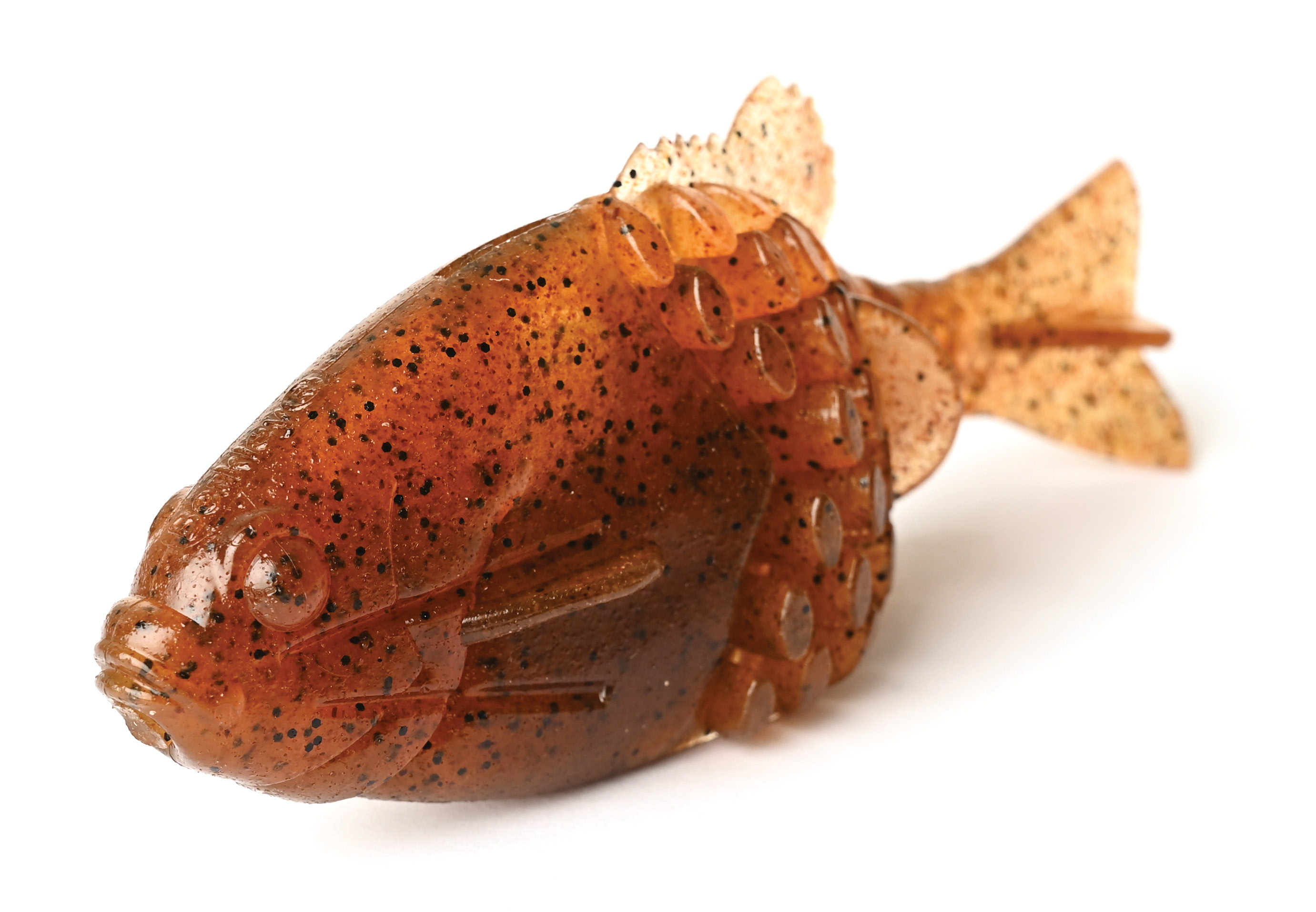
Nothing is more frustrating than a spawning bass that turns a blind eye to tubes, lizards and every other traditional bed-fishing bait you pitch into its nest. Savvy Bassmaster Elite Series pros who consistently catch obstinate spawners often do so by showing them baits they’ve never seen before.
These days, angling superstar Mike Iaconelli dupes bedding bass with two offbeat baits from Berkley. One of them is the new PowerBait Water Bug, which comes in 3.3- and 4-inch sizes. Although it was designed to be used with a drop shot or Ned rig for smallmouth bass, Iaconelli began “playing with it” on bass beds. He found that the slightest twitch brings the Water Bug’s paddle tail and tiny arms to life.
Buoyancy
“I like the fact that this small bait floats,” Iaconelli said. “On a jighead or a short drop shot, it stands head down, which is very natural to what happens in real life when a minnow runs into the bed to get some eggs.”
The Water Bug is buoyant enough to float when rigged on a light No. 2 hook, Iaconelli noted. A 1- to 3-inch drop line beneath the bait keeps it hovering just above the eggs.
“I use VMC’s SureSet Drop Shot Hook when nose rigging the Water Bug in sparse to open water,” he said. “If there’s a lot of cover around the bed, I switch to a VMC Ike Approved Neko Hook rigged Texas-style.”
When a bedding bass shuns a larger bait, he tosses the little Water Bug into the bed. The result is often an “instantaneous reaction” from a previously torpid bass.
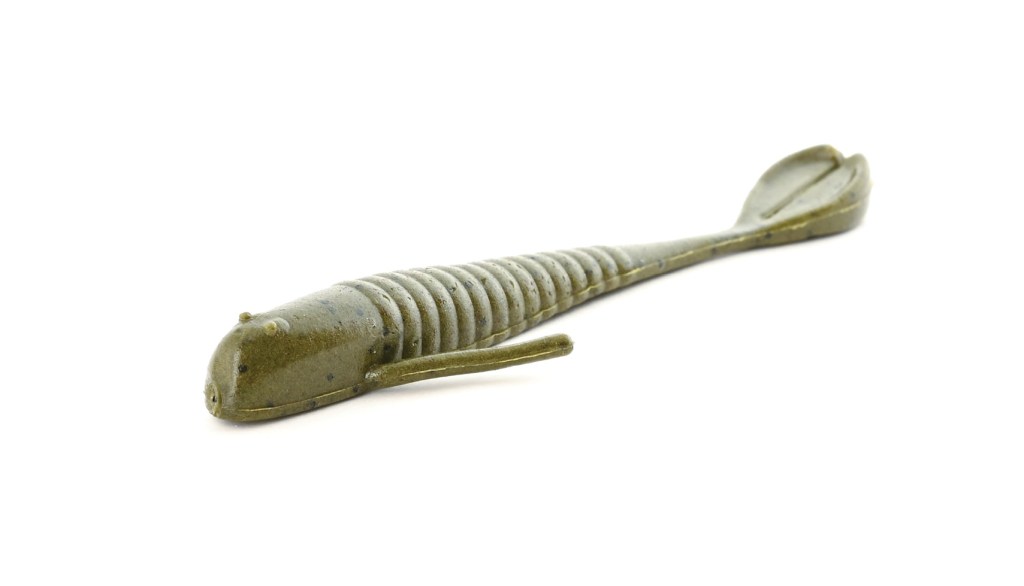
Anatomical
The other offbeat bait in Iaconelli’s bedding arsenal is the PowerBait Gilly swimbait, which is made in 90 mm (3.5-inch), 110 mm (4.3-inch) and 130 mm (5-plus-inch) sizes. It comes in high-definition colors that closely mimic a variety of panfish.
“Sometimes a mid- to big-size bait is the trigger,” Iaconelli said. “That 130 Gilly is about the size of the bluegill you see bass running out of their beds.”
Iaconelli claimed that the Gilly is the most anatomically correct bluegill bait he has ever fished. That includes the bait’s shape and swimming action. He especially likes the way the bait sits upright with its belly resting on the bottom when he lets it sink into a bed.
“That really gets them fired up,” he said. “They’re wired to save those eggs. It almost becomes a reactionary thing.”
If the Gilly 130 rouses a bass but it won’t commit, Iaconelli triggers the bite by casting a smaller Gilly or a tube into the bed. He rigs the size 90 Gilly on an exposed jighead or with a short-leader drop-shot rig. The larger 110 and 130 sizes are Texas-rigged sideways with a VMC Ringed Wide Gap Hook, a 3/0 for the 110 size and a 4/0 for the 130. The baits are matched with a 1/8- to 1/4-ounce bullet weight.
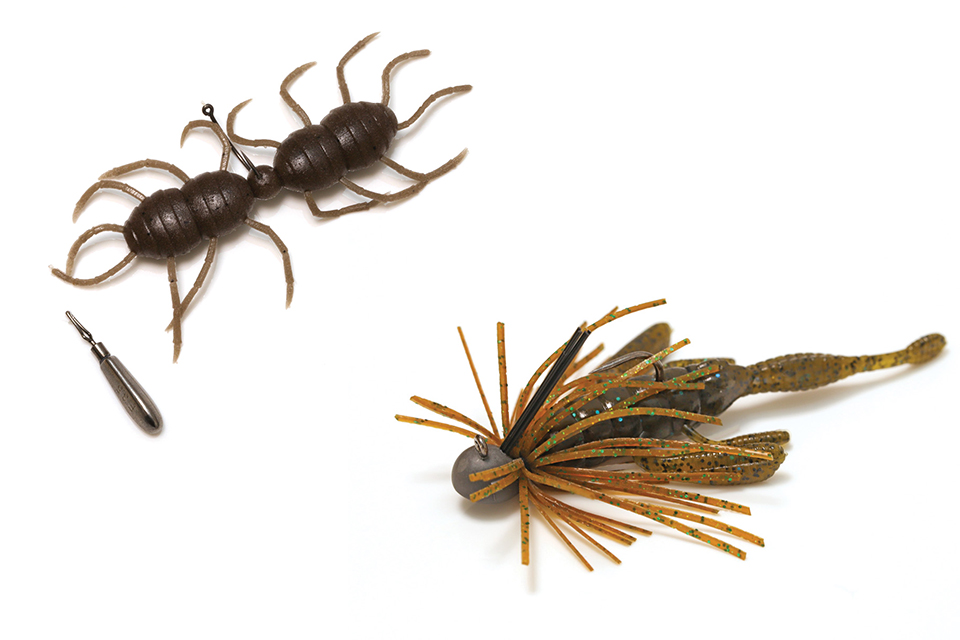
Japanese finesse
Japanese Elite Series pro Taku Ito coaxes bites from spawners with a unique lure made in his home country, the Fujin Spider Trailer from Imakatsu. This tiny 3-inch bait may have been intended for smallmouth bass, but Ito has found it to be just as deadly on “difficult” bedding bass.
With a narrow midsection and multiple thin appendages, the Spider Trailer resembles an oversized ant. Ito wacky rigs the bait drop-shot style with a 1/8-ounce weight and a No. 2 drop-shot hook. When it’s worked with short, quick, staccato twitches, you have to see this bait in action to believe what it can do.
“It has a small size but a very strong action,” Ito said. “Actually, it is a very funny action. The small legs move very fast.”
Despite its tiny size, Ito has used the Spider Trailer to trigger bites from sizeable spawners. When he competed in the 2021 Elite Series tournament at Lake Fork, Texas, he hoodwinked a 6-pound largemouth with the bait. When tempting bites from heavyweight bass, Ito opts for a spinning outfit matched with 15-pound braid and a 14-pound fluorocarbon leader.
Whenever Ito deals with a reluctant spawner, he downsizes his baits. Another diminutive bait that serves him well is the 2.5-inch Switch On Trailer from Nories. He rigs it on a silicone-skirted, 1/8-ounce Nories Finesse Jig or as a drop-shot bait with a No. 2 hook and a 3/16-ounce weight.
Green pumpkin is his go-to color with both baits, but he will occasionally switch to white so he can see the lures in dingy water.
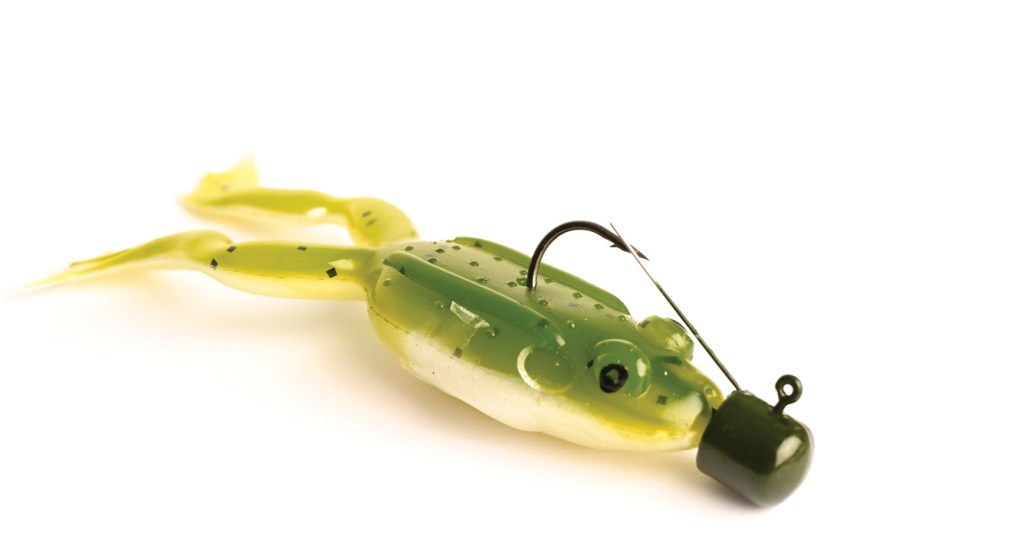
Outside the box
Another Elite pro who advocates using compact baits for bedding bass is North Carolinian Matt Arey.
“Bass are so good about knocking a bait out of their bed,” Arey said. “It’s harder for them to move a smaller bait without getting it into their mouth.”
The downsized bait he snookers bass with is the 3-inch Finesse Ned Frog from Lunkerhunt. Although it was designed to be fished on a Ned-head jig, he Texas rigs the bait with a straight-shank 2/0 Gamakatsu Finesse Heavy Cover Hook and a pegged 5/16-ounce bullet weight.
In addition to its size, Arey believes the little frog has the “something different” factor that gives him an edge over other anglers. And, it mimics what happens in nature.
“It’s pretty common for a frog to move into a bed and eat the eggs, just like a lizard,” Arey said.
Arey shuns white baits for bed fishing. He gets a bass to bite in less time with natural colors. His favorite color for the Finesse Ned Frog is watermelon seed pearl. The top of the bait is watermelon seed; the belly is pearl.
Once Arey locates the place in the bed that aggravates the bass, he twitches the frog lightly to keep it there. Every so often he will hop the bait aggressively in an attempt to trigger a reflex bite.“If I think the bass needs more of a kicking action, I’ll try some other baits,” Arey said.
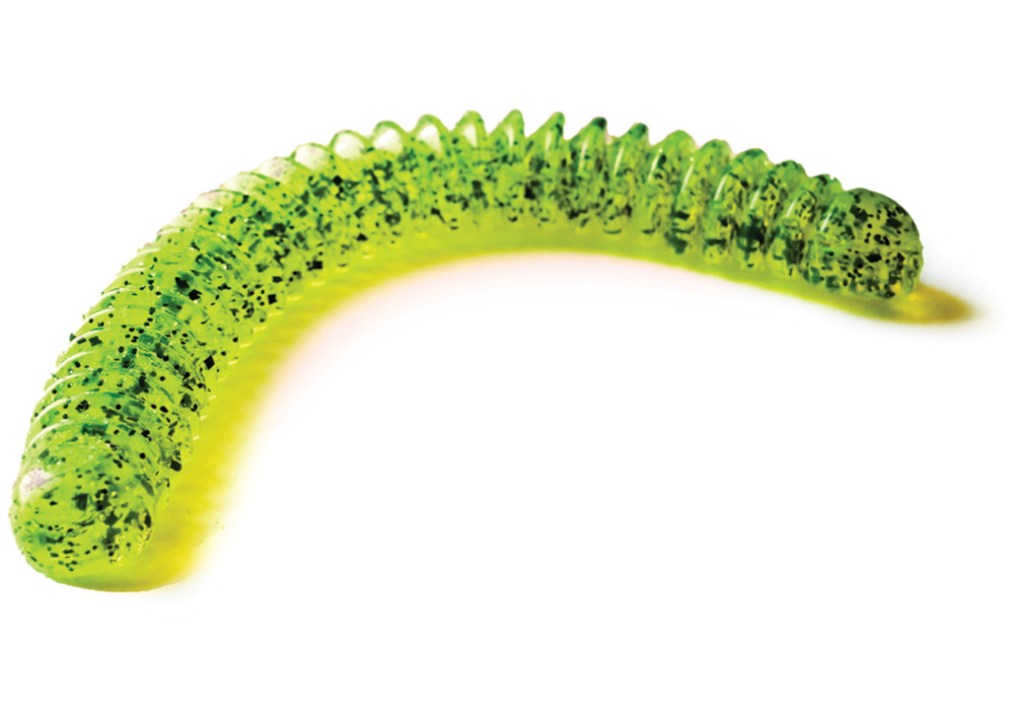
Bed sweeper
Elite Series veteran Mark Menendez of Kentucky overcomes resistant bedding bass with Strike King’s 4.5-inch OPT (Open Pour Technology) Supa Fry. He describes it as a cross between a centipede and a ring fry. Its flat bottom gives it a “crazy” action when Menendez wacky rigs it with a 3/32-ounce Gamakatsu G-Finesse Series Wacky Jig Head.
“It sinks with a moderately slow fall,” Menendez said. “What’s cool is that the jighead holds the Supa Fry a quarter inch above the bottom. To a bass, it looks like it’s hovering over the bed.”
Menendez favors the bright chartreuse pepper color because he can see it well in a bed. However, on lakes that receive heavy fishing pressure during the spawning season, green pumpkin and watermelon red colors produce more bites for him. He slowly creeps the Supa Fry across different areas of the bed. Due to its 4.5-inch width, it covers a wide area of the bed on each pass. This helps Menendez quickly locate the “sweet spot” that arouses the bass. Then he concentrates on that location.
“If I can’t get the bass to bite the Supa Fry, I’ll try other baits,” Menendez said. “But I know where the address is.”
Iaconelli’s bed fishing rules
Mike Iaconelli once eschewed sight fishing for spawning bass because he didn’t know how to consistently make them bite. He often fared poorly during all-out bed-fishing tournaments. That changed when he was schooled by fellow bass pros John Crews and Ish Monroe.
He went from being afraid to cast for bedding bass to becoming confident in his ability to catch them. When Iaconelli clinched the Elite Series AOY title in 2006, bed fishing played a key role.
The Golden Rule
“Every bedding bass is different,” Iaconelli stressed. “Even if you have four spawners in beds side by side, it may take a totally different bait and presentation to catch each fish.”
Size Matters
Iaconelli has three rods rigged with small, medium and large baits. They usually include the little Berkley PowerBait Water Bug, a tube or the 110 PowerBait Gilly and the large 130 PowerBait Gilly.
Trifecta Colors
Iaconelli brings aboard three colors in each of his bedding bass baits. One is a natural hue, such as green pumpkin. Another is a shock color, such as pink or white. The third is something between the other two.
“I start bed fishing with a medium-size bait and see how the bass reacts to it,” Iaconelli said. “Then I’ll try a large bait and a small one. I also show the bass different colors and fancast the baits across the bed.
“At some point, one of the baits will get a reaction from the bass. It might turn or flare its gills or swim in a circle. That tells me I’ve found the trigger.”
Originally appeared in Bassmaster Magazine 2022.





